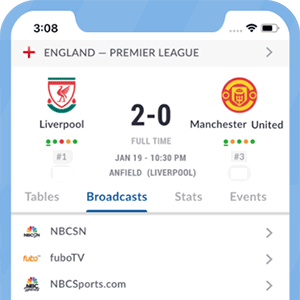
Olympic Soccer Qualifying - Men
Matches
Olympic Soccer Qualifying - Men Live Stream and TV Listings, Live Scores, Fixtures, Results
About Olympic Soccer Qualifying - Men
Olympic Soccer Qualifying - Men History, Format, Organization, Media Coverage
The process to determine the teams that play in the Summer Olympics is held every four years, usually one year before the tournament is staged. Qualification games see players of a certain age play for a spot in the quadrennial competition. If their national team makes it to the Olympic Games, three older players are permitted to join the squad to boost its chances of winning a medal.
The number of teams each confederation presents in any given Olympic tournament changes through time. The host nation is automatically qualified while fifteen spots are left up for grabs, combining for a total of 16 overall participants. All confederations have the right to determine how those slots are allocated. Here is the chosen format by each region:
CAF: The U-23 AFCON is used to determine the teams that play in the Olympic Games. The tickets go to the highest performers, for example, the winners; the runners-up; and the third-placed nation.
AFC: The U-23 AFC Championship is used to find out the teams that represent Asia in the Olympic Games.
CONMEBOL: All ten teams from this region are divided into two groups. This competition that determines South America’s representatives is known as the CONMEBOL Pre-Olympic Tournament.
CONCACAF: Three Central American teams, two nations from the Caribbean, and three North American sides (Canada, USA, and Mexico) battle it out for a spot in this tournament. This competition is known as the CONCACAF Men's Olympic Qualifying Tournament.
1992 saw the introduction of an age limit, with all but three squad members having to be under the age of 23, hence the age restrictions for the qualifying stages. As a result, established international players cannot appear until the official Olympic Games.
















